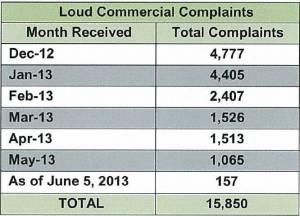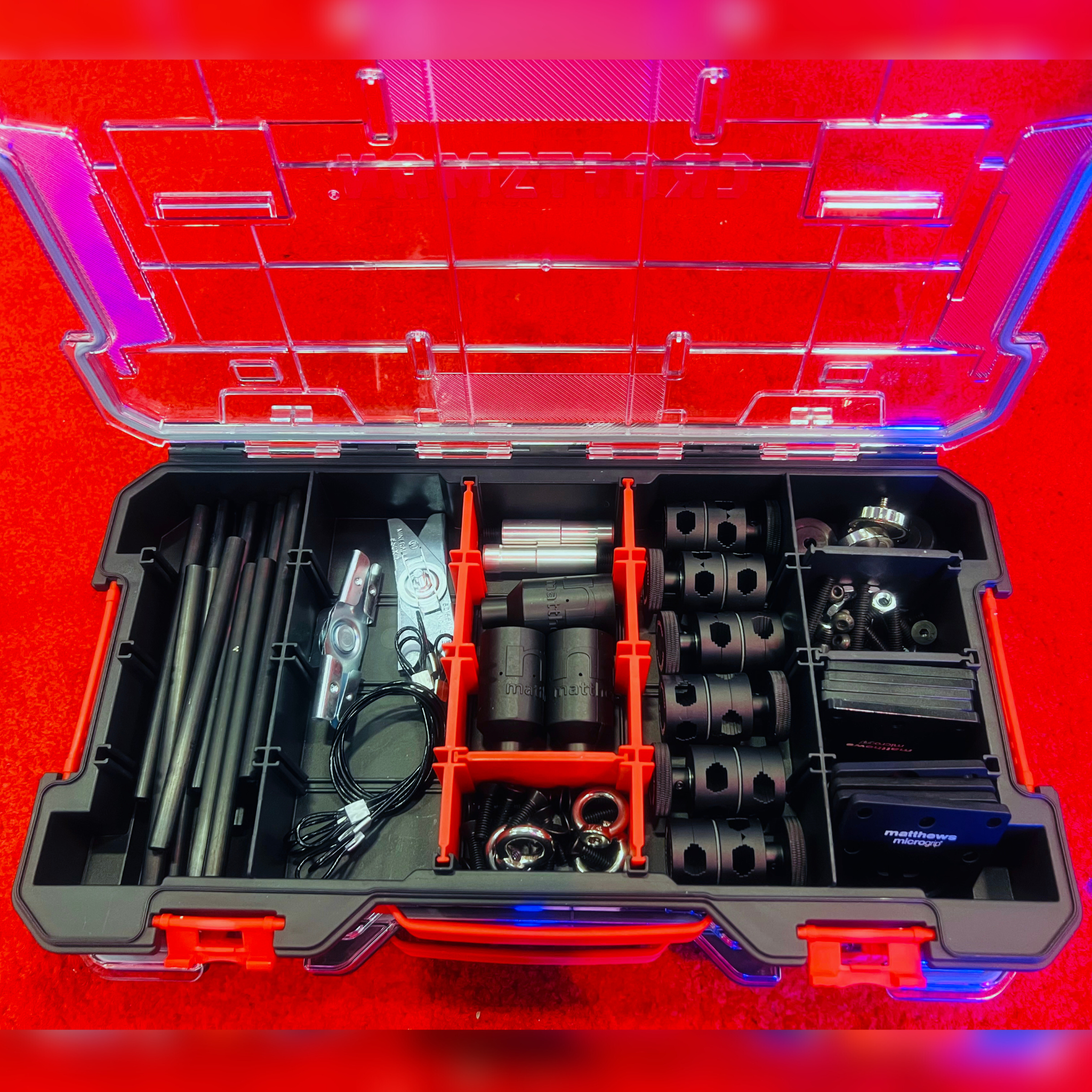CALM Act facts revealed
One month ago, the "Transition to Digital" newsletter reported that the first six months of CALM Act compliance was more or less calm. Much of the information for that story came from loudness compliance solutions manufacturers and local TV stations. It’s more difficult to get the FCC’s side of the story unless you happen to be the Ranking Member of the House Subcommittee on Communications and Technology. That person is Congresswoman Anna G. Eshoo. She asked the FCC some questions we would all would like to ask, and she received a frank and revealing response.
The truth about the CALM Act was unveiled in a June 27, 2013, written response from Acting FCC Chairwoman Mignon L. Clyburn. Her letter reveals that 15,850 viewers took time to complain to the FCC about loud commercials. Many, apparently, filled out this form: https://esupport.fcc.gov/ccmsforms/form2000.action?form_type=2000G.
The real story
The following is a quote from the Chairwoman’s letter and attachment:
Dear Congresswoman Eshoo:
Thank you for your letter regarding the Commission's work implementing the Commercial Advertisement Loudness Mitigation (CALM) Act. I appreciate your dedication to this issue, and I am pleased to respond to your letter.
Following the CALM Act's requirements, the Commission relied upon a technical standard embraced by the industry when it adopted rules to improve the parity of volume between commercials and the accompanying programming. The Commission struck an appropriate balance between the rights of consumers and the potential impact on affected industries. As required by the Act, the Commission incorporated by reference the industry-created ATSC A/85 recommended practice. The A/85 recommended practice is a set of methods to measure and control the audio loudness of digital programming, and requires commercials to have the same average volume as the programming they accompany on both broadcast television and multichannel video programming distributors (MVPDs). The expectation is that compliance with the new rules will result in a reduction of instances of loud commercials for most consumers.
The Commission timely implemented the CALM Act in 2011, and the resulting rules went into effect at the end of last year. Our work is not done, however, as we must also address consumer complaints and overall compliance with the rules to achieve the benefits Congress intended.The CALM Act itself recognizes that loudness is subjective and therefore relies on the ATSC recommended practice to address the problem. Consequently, the Commission established an enforcement mechanism that relies on complaints from the public, which are reviewed for patterns or trends that indicate non-compliance and warrant investigation and potential penalties. That review is underway. We have provided additional detail about these efforts in the attached responses to your specific questions. While it has only been a short time since the rules became effective, please be assured that we take seriously our responsibilities under the CALM Act. We will continue to provide information to the public regarding the issue, and we will work with the industries to ensure compliance.
The attachment
1) How many complaints has the FCC received from consumers reporting commercials that appear louder than the programming that they accompany? Please provide a breakdown of these complaints by month beginning in December 2012 and include any comparative data to the number of complaints received before the CALM Act went into effect.
Response: Consumer complaints are generally submitted electronically, and we designed a special form for complaints about loud commercials, which we implemented on the date the rules took effect (Dec. 13, 2012). Not surprisingly, the special form and the publicity surrounding the new rules prompted a large wave of complaints, which has subsided significantly and consistently over the past six weeks. A chart of the number of complaints the FCC received, by month, is set forth below.
Loud Commercial Complaints
Month Received/Total Complaints
Dec. 2012: 4,777 complaints
Jan. 2013: 4,405 complaints
Feb. 2013: 2,407 complaints
March 2013: 1,526 complaints
April 2013: 1,513 complaints

May 2013: 1,065 complaints
As of June 5, 2013: 157 complaints
TOTAL: 15,850 complaints
The total from December 13, 2012 through June 5, 2013, is 15,850 complaints. Roughly two-thirds of these complaints (10,700) were referred to the FCC's Enforcement Bureau for analysis to determine if enforcement action was warranted. The remaining complaints (5150) were incomplete. With respect to incomplete complaints, consumers were informed that their complaints lacked necessary information and instructed as to how tore-file.
In the third quarter of 2012, before the rules took effect and the special form was implemented, the Commission received 192 complaints regarding loud commercials.
Non-compliance and video-on-demand programming
2) Has the FCC observed any patterns with regard to non-compliance?
Response: Enforcement Bureau staff reviews complaints that are forwarded from the Consumer and Governmental Affairs Bureau. Our effort in this regard is on-going, and as with any potential enforcement activities, we refrain from disclosing any information that could compromise our work. As provided in the rules implementing the CALM Act, the Enforcement Bureau seeks to identify patterns or trends of complaints. When a pattern or trend of complaints is identified, then further Enforcement Bureau inquiry may be taken, including sending a Letter of Inquiry to the station or MVPD that is responsible for the commercials complained of. The rules require the station or MVPD that receives such a letter to demonstrate that it is in compliance with the rules.
The station or MVPD may demonstrate compliance either by showing that the commercial complained of did comply with the ATSC A/85 recommended practice or by conducting spot checks of the programming complained of to be sure it is in compliance.
Identifying a pattern or trend requires complex and multi-dimensional analysis of the complaints. We are continually reviewing the complaints and analyzing them by MVPD, by station, by commercial-complained of, by geography, and by programmer/network, among other factors. The data provided by consumers, however, is often not sufficiently specific or consistent to facilitate reliable analysis. To improve the data, we re-examined the complaint form used for intake and identified improvements to make it easier for consumers to provide the specific data we need. However, implementing the improved form has been and continues to be delayed by lack of funding due to the Commission's reduced budget and the belt-tightening associated with sequestration.
3) Has the FCC received any specific complaints regarding commercials inserted during "video-on demand" programming?
Response: We received 55 complaints regarding loud commercials that occurred in connection with or that pertained to On Demand programming.
Waiver requests
4) How many waiver requests has the FCC received for temporary relief from the CALM Act rules and how many of these requests have been granted?
Response: As you know, the CALM Act includes two waiver provisions: (1) a financial hardship waiver (where entities are allowed up to two, one-year waivers), and (2) general waiver authority for good cause.
Under the financial hardship waiver provisions, generally, there is a four-part test for stations and MVPDs that requires information on financial condition, cost estimates, a detailed statement justifying postponed compliance, and an estimate with supporting information on how long until compliance can be achieved. In order to alleviate burdens on smaller entities consistent with the intent of Congress, the Commission adopted a streamlined process for small stations and MVPDs.
Requests under the streamlined provisions are considered granted upon submission, unless the Commission notifies a small station or MVPD to the contrary. The Commission has received 170 waiver requests from TV broadcast stations and multichannel video programming distributors (MVPDs) for temporary relief from the CALM Act rules- 168 Streamlined Financial Hardship Waiver Requests (for a one-year waiver of effective date of the rules) and two (2) General Waiver requests (for a short-term waiver of effective date of the rules). All 170 waiver requests were granted.
The waiver requests are available in the Commission's Electronic Comment Filing System (ECFS) under Docket No.ll-93. Link: http://apps.fcc.gov/ecfs/comment search/input?z=qiuxj.
Get the TV Tech Newsletter
The professional video industry's #1 source for news, trends and product and tech information. Sign up below.
